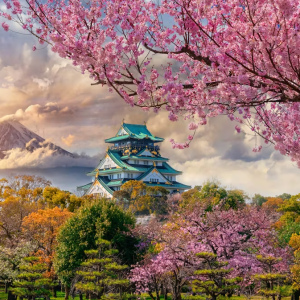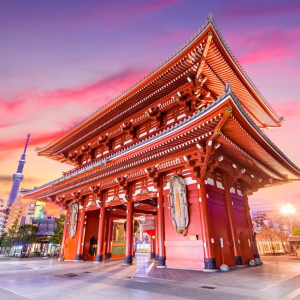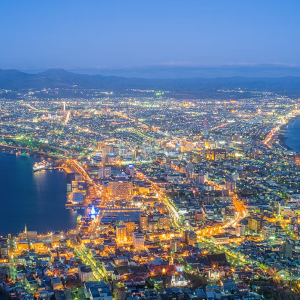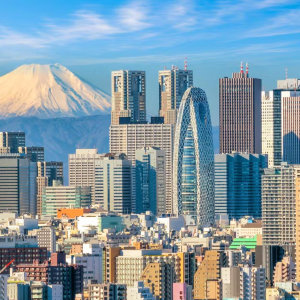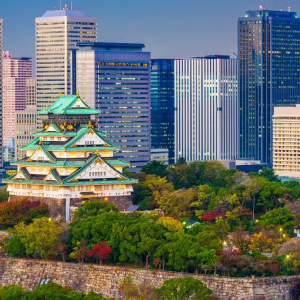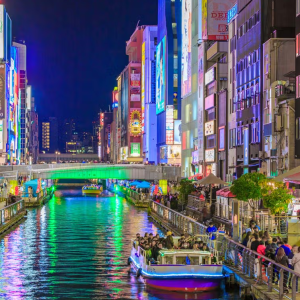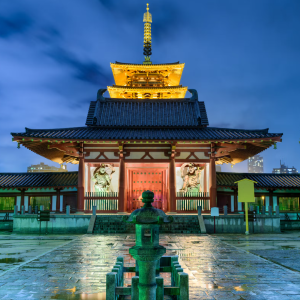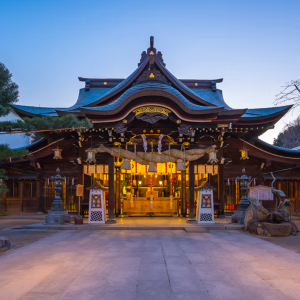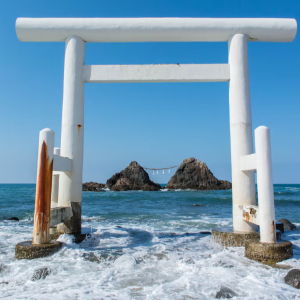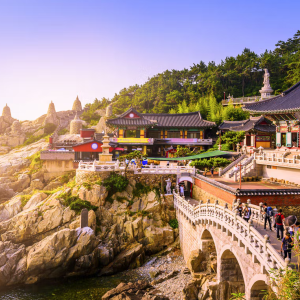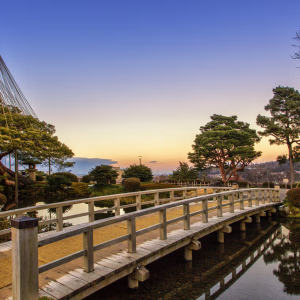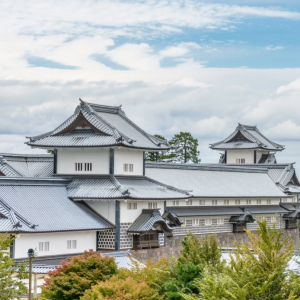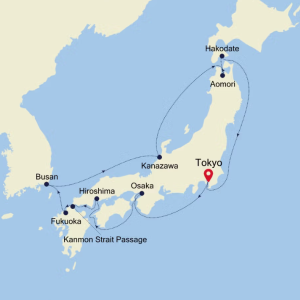14 Day Japan & South Korea Cruise
Silversea | 14 Days | Roundtrip Tokyo
March 23 - April 6, 2026
Experience the beauty of Japan’s blossom season with this exceptional voyage. A round trip from Tokyo, an overnight in Osaka allows you to witness the iconic mankai, Japanese for full bloom, followed by spectacular sakura in Hiroshima. Marvel at the magic of Fukuoka’s 1,300 cherry blossom trees. A stroll around South Korea’s Busan will delight you, along with captivating flower displays in Kanazawa, Aomori and Hakodate.
AAA Member Benefits and Special Offers:
- Member Benefits
- Up to $300 per person onboard credit on select sailing dates
Your Ship: Silver Moon
Door-to-Door
For a relaxing, seamless journey from the moment you depart home, this fare includes airfare, transfers, and shore excursions.
- Pre & Post Cruise Benefits
- Private Executive Transfers
- International Flights
- Airport transfers
- Hotel
- In-country flights
- All Onboard Luxury Inclusions
- Food and beverages
- Butler service
- Expedition gear
- Shore excursions
Port-to-Port
For those who prefer to manage their own airfare and transfers, but still want included shore excursions, this fare is for you.
- Pre & Post Cruise Benefits
- Hotel
- In-country flights
- All Onboard Luxury Inclusions
- Food and beverages
- Butler service
- Expedition gear
- Shore excursions
Day 1 (MAR 23): Tokyo, Japan
Dense and delightful, there's nowhere else like Japan's kinetic capital - a city where ancient traditions blend seamlessly with a relentless pursuit for the future's sharpest edge. See the city from above, as elevators rocket you up to towering viewing platforms, from which you can survey a vast urban ocean, interspersed with sky-scraping needles. Look out as far as the distant loom of Mount Fuji's cone on clear days. Futuristic - second-accurate - transport seamlessly links Tokyo's 14 districts, while the glow of flashing advertisement boards, clinking of arcade machines, and waves of humanity flowing along its streets, adds to the sense of mesmerizing, dizzying, and glorious sensory overload. One of Tokyo's most iconic sights, don't miss the flood of people scrambling to cross Shibuya's famous intersection. Join the choreographed dance, as crowds of briefcase-carrying commuters are given the green light to cross at the same time - all bathed in the light of massive neon advertisements. The culture is immensely rich and deep, with 7th-century, lantern-decorated temples, stunning palaces, and tranquil scarlet shrines waiting below cloaks of incense and nestling between soaring skyscrapers. Restaurants serve up precisely prepared sushi, and wafer-thin seafood slivers, offering a unique taste of the country's refined cuisine. Settle into traditional teahouses, to witness intricate ceremonies, or join the locals as they fill out karaoke bars to sing the night away. In the spring, cherry blossom paints a delicate pink sheen over the city's innumerable parks and gardens.
Day 2 (MAR 24): Day at Sea
Days 3-4 (MAR 25-26): Osaka, Japan
Japan's third-biggest city has thrown off its shackles and stepped out of the shadows to light up the sky with glaring neon signs and a larger-than-life outlook. Giant octopuses cling to buildings and bustling restaurants pack in the crowds in this great and garish place, which is Japan at its most friendly, extroverted, and flavorful. So dive in headfirst to experience an all-out sensory assault of delicious food, shopping cathedrals, and glittering temples. Dotombori Bridge bathes in the multicolored, jewel-like lights of signage-plastered buildings, and the neon lights dance on the canal's waters below. Osaka is known as the nation's kitchen, and the Kuromon Ichiba Market has served as the city's spot to tuck in for almost 200 years. Full of street food stalls - try pufferfish, savory Okonomiyaki pancakes, or ginger and onion-flavoured octopus, among the endless feast of exotic flavors. Osaka Castle is another of the city's landmarks, built in the 16th century by Toyotomi Hideyoshi. A modern museum now waits inside, where you can learn about the country's history, and why this castle is a symbol of Japanese unity. Be sure to take the elevator up to the observation deck for a panoramic view of Osaka's spread. A colorful park encloses the castle and blooms with an ocean of pale pink cherry blossoms during the season - the elegant black tiers rising from the pink haze below is one of Osaka's most alluring visions. Kyoto's peaceful cultural treasures and temples are also just a short jaunt away on Japan's sleek trains, should you wish to explore further afield.
Day 5 (MAR 27): Day at Sea
Day 6 (MAR 28): Hiroshima, Japan
History buffs will want to write home about Hiroshima. Despite being devastated in 1945, this Japanese city is known to all for its commitment to peace - its ruin on August 6, 1945, led to the end of the war and today, the Peace Memorial (a UNESCO World Heritage Site), is a constant reminder of the destruction that war brings. A walk in the leafy boulevards of Peace Memorial Park brings quiet contemplation. The Flame of Peace - set in the park's central feature pond - burns brightly and will continue to do so until all the nuclear bombs in the world have been destroyed. There are many other inspiring messages of hope around the city too; the Children's Peace Monument just north of the park is a homage to little Sadako Sasaki, who was just two in 1945. When she developed leukemia in 1956, she believed that if she folded 1,000 paper cranes - a symbol of longevity and happiness in Japan - she would recover. Sadly, she died before she finished her task, but her classmates finished the rest. If you are lucky enough to visit during the unpredictable and short-lived Sakura (cherry blossom) season, then the extraordinary sight of the delicate pink blossom floating across the water to the red gate, means you can consider yourself one of the luckiest people on the planet.
Day 7 (MAR 29): Fukuoka (Kyushu Island), Japan
Boasting Japan's heady cocktail of hot springs, gourmet food, abundant nature, and spiritual history, Kyushu Island has all the advantages of the mainland, while enjoying its own identity. The island is the third largest of Japan's five island provinces and prides itself on having everything you could expect from the Land of the Rising Sun. The capital of the island, Fukuoka, is Japan in a bite-sized morsel. As one of the country's most strategic ports - it is closer to Seoul than Tokyo - the city has enjoyed a somewhat prestigious status over the years, including two unsuccessful Mongol invasion attempts in the 13th century. Some scholars suggest that the city is also the first place the Imperial Family set foot, although actual proof of this is scarce. What is certain however is that it was once the home of the samurai, with many samurai-related spots found all over the city. A trip to the Kyushu National Museum will allow budding actors to try on traditional costumes and channel their inner feudal lord, while local shrines, tranquil Zen gardens, and castle ruins all offer a chance to relive the city's glory days. The city itself is made up of two smaller towns (Fukuoka and Hakata), and despite unification in 1889, Hakata is still considered the center. A 2018 survey ranked the city number 22 on the "world's most livable cities" list, due to its excellent shopping, outstanding food, excellent transport links, good museums, "feeling of openness", green spaces, and friendly, safe, environment.
Day 8 (MAR 30): Busan, South Korea
A tapestry of kaleidoscopic colors, intense seafood flavors, and urban beach bliss, Busan rolls across a glorious natural setting on the Korean Peninsula's southeast. One of the biggest and busiest ports in the world, 3.5 million people call South Korea's second city home, and the amiable locals help to lend the city its quirky, offbeat outlook. A spacious, playful, and cosmopolitan place, Busan is a lively, livable city, cradled by lush mountains and endless ocean scenery. Haedong Yonggung Temple nestles on a dramatic cliffside, just above the crumbling rocks and crashing waves of the East Sea. Dating back to 1376, the temple's multi-story pagoda is adorned with lions - each representing a different emotion. Elsewhere, lanterns glitter in the night sky around Mount Geumjeongsan, freshly released from the beautiful Beomeosa Temple, which was established in AD 678. The hillside shantytown of Gamcheon Culture Village has completed an improbable transformation, blossoming from a sea of makeshift homes for Korean war refugees, into a colorful explosion of creativity and curiosity. Local artists have been let loose to create interactive installations, and the entire area is now an expansive canvas for expression. Lose yourself among vibrant alleyways of flamingo-pink, lemon-yellow, and baby-blue painted facades in this unique area. Sample bibimbap, fiery-hot beef, and rice, from street food vendors, before relaxing on one of South Korea's best beaches - Haeundae's banana bend of sand. Metallic skyscrapers offer an unusual backdrop to this pristine expanse of golden powder and are mirrored by elaborate sandcastles and sculptures during the annual sand festival - when spontaneous water fights and firework displays also take place. Gwangalli Beach is another urban option, laying out spectacular views of the reaching Gwangan Bridge - the country's second largest bridge. At night, 16,000 bulbs bathe this "engineering marvel in color."
Day 9 (MAR 31): Day at Sea
Day 10 (APR 1): Kanazawa, Japan
The capital of the Ishikawa Prefecture, Kanazawa once rivaled Kyoto and Edo (Tokyo) as a town rich in cultural achievements. Kanazawa escaped destruction during World War II and accordingly has been able to preserve many of the old districts in good shape. The city is famous because of Kenrokuen. Located next to Kanazawa Castle, Kenrokuen is classified as “One of the Three Gardens of Japan”. The garden has an artificial pond, and hills and houses are dotted within the 11.4 hectares. It has Japan's oldest fountain using natural water pressure and a teahouse dating back to 1774. Close by is the Higashi Chaya Gai Geisha District, designated a National Cultural Asset and the biggest of the Geisha districts of Kanazawa. Some of the houses not only retain the original structure but still are used as Geisha houses. Some of the streets have traditional shops creating a nostalgic atmosphere. Kanazawa is also known for its lacquer ware, Kutani-style pottery, gold-leaf workmanship, and delicately painted silk kimonos.
Day 11 (APR 2): Day at Sea
Day 12 (APR 3): Aomori, Japan
From fiery festivals to spectacular mountain scenery, soaring temples to castles surrounded by cherry blossom blooms, Aomori is one of Japan's most enchanting destinations. Framed by dark peaks clad with dense forestry, the city enjoys a picturesque location on Japan's main island Honshu. While there are gorgeous, pink-tinted parks, tiered castles and towering Buddha statues to explore, the Aomori prefecture’s capital is perhaps best known for the summer festival of fire that lights it up each year. Lavish illuminated floats fill the streets during Nebuta Matsuri festival, as dancing locals wave flickering lanterns through the night sky - and drummers pound out pulsating rhythms. Nebuta Matsuri has a euphoric and energetic atmosphere which makes it stand out as an unmissable experience compared with some of Japan's more restrained festivals. At other times of the year, places like the stunning Hirosaki Castle bloom with rose-pink cherry blossom, as spring's sunshine clears away winter's plentiful snowfall. The castle's moat, glowing with the pale hue of fallen blossom, is a truly mesmerizing sight to behold. Don't worry if you are too late though, you might be able to catch the pink-flush of the apple blossom - which comes slightly later. Extraordinary prehistoric Jomon period history is waiting to be unearthed at the living archaeological site, Sannai-Maruyama Ruins. Or the untouched wilderness of UNESCO World Heritage Site Shirakami Sanchi is within reach. This sprawling mass of beech trees covers a third of the Shirakami mountain range, and the dense forestry once blanketed most of the northern Japan's land. Visit to scratch the surface of this untamed landscape's beauty and see sprawling waterfalls cascading down mountainsides, in a beautiful off-limits landscape, where black bears roam freely.
Day 13 (APR 4): Hakodate (Hokkaido), Japan
Gaze down over Hakodate, from the heights of its namesake peak - Mount Hakodate - to see the city stretching out spectacularly, with back-to-back twin bays splitting the ocean. Hakodate port was one of the first to open Japan up to the world and to international trade in 1859 - a fact reflected in the architecture, with its influences from the West and beyond. The port area is a redbrick wash of warehouses turned shopping malls, all observed by the onion domes of the city's Russian Orthodox church. Elsewhere, the star-shaped Goryokaku fortress glows with natural colors and a beautiful haze of cherry blossoms during the season. Goryokaku Tower, which rises up beside it, offers a sweeping bird's eye view of the green fortress and mountain backdrop. Buses trundle up the 335-meter incline to the top of Mount Hakodate, but the best way to reach the views is to jump on the ropeway, which swings high above downtown's buildings, over a carpet of pine trees. Head up to the mountain's heights as sunset approaches. With darkness sweeping in, and the lights flickering to life, the panorama is one of Japan's most spectacular. Soak it all in, and look out to the horizon, dotted with the shimmering lights of ships hauling in harvests of the city's renowned squid. The plankton-rich waters attract a delicious variety of feasting sea life to Hakodate's coast, which is then plated up in the city's numerous, skilled restaurants. For an eye-opening, whirring morning, see the freshest produce being doled out at Hakodate Morning Market - amid a cacophony of noise and activity.
Day 14 (APR 5): Day at Sea
Day 15 (APR 6): Tokyo, Japan
All pricing and offers for accommodations and other non-air travel are per person, based on double occupancy, capacity controlled and subject to availability and change without notice. Pricing does not include taxes, fees, fuel surcharges, gratuities, resort fees, or airfare unless otherwise noted and is valid on new bookings only. Prices, fees, and other restrictions are subject to supplier policies. All offers, including but not limited to, bonus amenities, upgrades, prices, and group benefits are based on select dates, resorts, room categories, and/or fare codes. Specialty pricing may require proper identification. Cancellation penalties, blackout dates, and other restrictions may apply. When traveling outside the United States a valid passport is required. It is the sole responsibility of the passenger to have the proper documentation and identification required by the United States and other governments at the time of travel. When passports are required, it must be valid for a minimum of six months past your date of return. AAA strongly recommends the purchase of Travel Insurance. Usage of a credit card for travel arrangements may provide additional protection, please consult your credit card policies. Under certain circumstances the package price may be subject to supplemental price increases imposed by the supplier. Price increases include, but are not limited to fuel surcharges, taxes or fluctuations in foreign exchange markets that may be imposed after the date of purchase. Air-inclusive prices do not include government imposed taxes and fees, including but not limited to a September 11th Security Fee, U.S. or international government imposed taxes and fees, Federal Excise Fees, among others. Some carriers charge additional fees for checked bags, fuel surcharge, meals, etc. Please check the carriers website for details. Air-inclusive pricing is based on select departure cities. Prices from other cities may vary. AAA Oregon/Idaho acts solely as a sales agent for travel suppliers and is not responsible for the actions or inactions of such suppliers. We monitor all of the information presented on our website; however, we do not assume responsibility for any errors or omissions in the content of the offers displayed. Review full Travel Disclosure and Consent at time of booking.
 Click Here to View Your Vacation
Click Here to View Your Vacation
